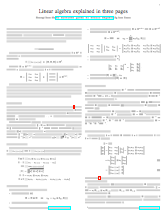I’m organizing papers today, and I keep finding dev-notes and plans for my big “home server” idea about being able to run all your “cloud services” on your own hardware with all the data protection this entails. But what is easy to imagine can be difficult to bring to reality. There are a lot of technological aspects to figure out (dyndns, mail, www, filesharing, apps?), but there is also the lack of interest in privacy matters of the general public.
The freedom of computing and the Internet is a question that depends on technology but also on public relations. I recently came up with a plan for one possible way to get FOSS into homes. PR is indicated in brackets.
- Phase 0: Develop FOSS clones for most popular cloud software. [100% done]
- Phase 1: Non-tech-savvy users learn to deploy “own server” in the cloud based on a FOSS software stack. [2015]
(Run your own Google with just one click! Customize and automate everything. Don’t let anyone tell you what to do on the Internet.) - Phase 2: Non-tech-savvy users move their existing “own servers” to run on their “home server.” [2020]
(The Internet is distributed; be the Internet. Who got ur logs? Protect your privacy and that of your family and friends. Political discussion is not a crime. Unlimited storage—just add USB drives to the RAID. )
I think the two-step process for the home server is much more likely, even realistic. Both phases involve transitions to better features. The transition to Phase 1 will be interesting for power users, but if everything is scripted, then even non-tech users could “run their own” thing. For it to happen, we need to get to “same thing as … but with more ….” Only after we have a mature system of own apps can we then move to Phase 2 where we say: “same thing as own, but at home.”
I’m a big believer in humanity and our ability to learn adapt and advance so I think we will be able to “domesticate” the power of computing as we previously domesticated fire and electricity.





